I would rate red mites as being one of the biggest problems you will face when keeping chickens. Red Mites live in the cracks of chicken houses (typically under perch ends) coming out at night, crawling onto your birds for a feed.
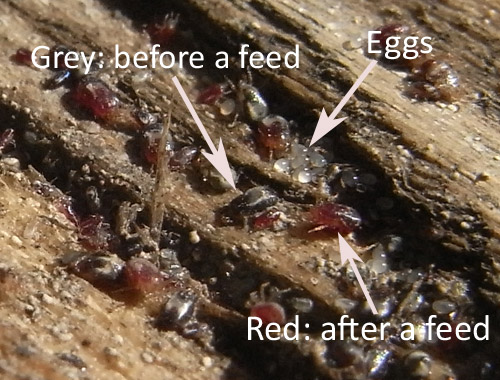
Macro shot of Red Mite in a crack on a perch. These were disturbed after a treatment with Poultry Shield.
They start off as very small greyish-white mites that swell up into red coloured mites after a feed and at their biggest are only 1mm so small numbers of them can be hard to spot unless you know what to look for.
You will often find a grey ash like deposit around perch ends which is where the mites have been and if you lift the perch, you will see clumps of mites.
Red Mite in chickens’ houses are active during the warmer months, usually May to October and will become dormant over the winter. They multiply at an incredible rate: their life cycle is just 7-10 days. In other words from hatching from an egg to being an adult laying hundreds of eggs takes just a week if conditions are right.
Be Proactive.
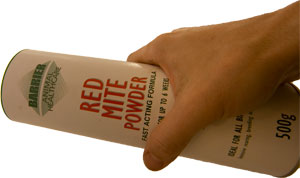 The best course of action is to check for red mite routinely when you clean your chicken house out and use some preventative treatment to the house before they get a hold. You will get to know the places to look and once you have found small numbers of them, you can treat the house to keep numbers under control. See my ‘preventative measures’ below
The best course of action is to check for red mite routinely when you clean your chicken house out and use some preventative treatment to the house before they get a hold. You will get to know the places to look and once you have found small numbers of them, you can treat the house to keep numbers under control. See my ‘preventative measures’ below
Are there Red Mite in your Chicken House?
People normally discover Red Mite when they are over-run by them. When hens are being bitten, they can refuse to go in to roost at night, they will become anaemic and their combs will go pale. They will often stop laying and you may find red blood stains on eggs (squashed Red Mites). Eventually, you will start to see losses in the flock.
Checking for Red Mite in Chickens Houses
Red Mite will hide away in the daytime but can often be seen if you lift perches, examining the ends. They will usually come swarming out if you treat the cracks with Poultry Shield but by far the easiest way to check to see if there are red mite is to take a piece of white kitchen roll and to rub it along the underside of the perch when your hens are roosting (in the dark). Look at the tissue and if there are Red Mite heading back from their feed, they will be squashed on the kitchen roll as streaks of blood.
Getting rid of Red Mite
It is very hard to get rid of them completely so it is often better to get the numbers down and then find a way of keeping them down that doesn’t involve you spending hours on cleaning the house out. There are lots of different treatments that people use, some more effective than others but I will focus on what I do and have found to be the most successful for me.
If you haven’t got red mite and the weather is warm enough for them (May to October in the UK) then skip step 1 and go straight to step 2. Preventative Measures.
1. Getting rid of an infestation.
If you find lots of red mite in the coop, it’s time for a big clean up that will take a couple of hours initially, then an hour every 5 to 7 days for at least 2 more weeks.
The products I have found to work the best (that are relatively safe) are Poultry Shield and Diatom. These two are not ‘knock down’ products as such, they do take a little while to work but are none the less very effective. I also use Red Mite Powder on the hens themselves to help them through the night when the Mites are active.
You can BUY Poultry Shield from Amazon Here.
Here is what I do with the Poultry Shield.
- Remove all birds from the house.
- Strip the house down as much as possible.
- Clean the house out – be careful where the bedding is going as red mite live for 6 months without a feed and will find a new home If they can. Ideally seal the bedding in bin bags or burn.
- Mix up as many watering cans of poultry shield mixture as is needed, as per the instructions on the label 1 part to 9 parts water.
- ‘Water’ all cracks in the chicken house, concentrating where there are perch ends and concentrations of red mite.
- Leave to soak for 15 minutes
- Red mites will be coming out. Cover them and the cracks with poultry shield again.
- Wait 15 minutes
- Hose out the house, concentrating on getting the pressure jet into the cracks and so on.
- Leave the house to dry.
Poultry Shield is a mild detergent and ‘washes’ the waxy coat off the red mites. It is also good for removing organic matter from the hen house so is useful for cleaning. I wouldn’t be without this!
After using the Poultry Shield, when the house is dry, I use Diatom. Diatom is made of micro skeletons of fossilised remains of diatoms. These were once a kind of algae found in water. They are microscopically sharp and pierce the outer waxy coating of the mites which causes them to dry out and die.
The second step also double up as my ‘preventative’ measures if you haven’t yet got a bad infestation
You can BUY Diatom from Amazon HERE
2. Preventative Measures
- Dust the ends of the perches / nest boxes and where ever else you found concentrations of red mites when cleaning.
- Rub as much into the perches as you can. Red mite will avoid the diatom and will crawl around it if they can, so make sure they have to crawl through it to get a feed.
- Repeat every couple of days for as long as you see signs of red mite in the coop.
Repeat the whole cleaning process if there are still lots of mites in 5 to 7 days. You will find you might not need to spend as long on the washing as there won’t be as many mites.
Very Important: Make sure you repeat it before 7 days so that the mites don’t have a chance to lay more eggs. A few mites become a lot in a very short space of time!
If you have a felt roof on your chicken house and they get underneath, it is usually impossible to get rid of them without removing the felt, cleaning and re-felting. My page on Chicken Houses gives more information.
Finally, I will dust the hens down between their feathers with Red Mite Powder to give them some respite during the night when the mites are active.
Beware of what you read!
There is a lot of information written about these troublesome ectoparasites on the internet these days, much of it re-written and re-spun. When I started writing about them, there was little available online. Strangely, some small errors that I had introduced on my page that I corrected in an update pop up frequently on other websites. Running a Google image search often uncovers companies that have used my copyrighted images! I make regular checks to try to stop this from happening.
If you wish to learn more about red mite then I would encourage you to read the guide to red mite on poultrykeeper.com. This is a reliable source of information and is regularly updated.

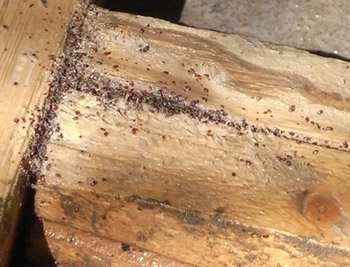
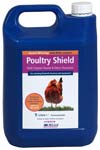
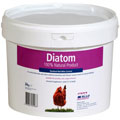
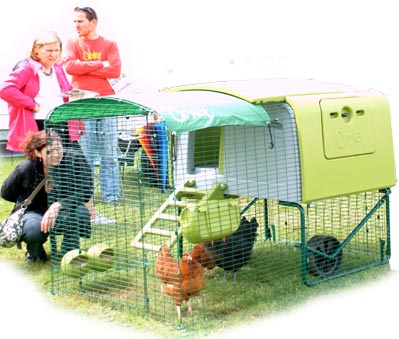
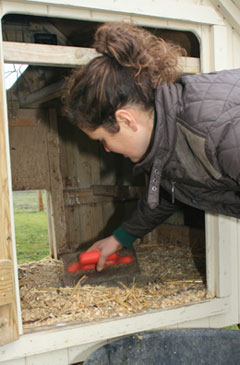
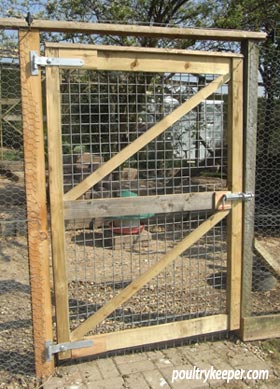
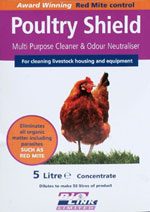
We are doing test trials January 2011-2013 on natural insect repellent using the Secrets of Nature to drive these red mites and their lice cousins away from poultry sheds.
If you wish to test the smart-fluids in your shed, and become part of the test & research community, using only environmentally friendly applications, then send a email to info@nanolandglobal.com, with Red Mite Test in the subject box.
One of the world’s top poultry producers is currently testing our products.
Kindest regards
Dermott Reilly, CEO NanoLandGlobal.Com
Thank you. I have emailed you with some information.
All three of our chickens stoped laying a couple of weeks ago. I have just noticed that all of them have white speckles on the tops of their head (not sure if some of it is the feathers coming out) and one of them has also lost alot of feathers to her wings, again looking white. I was wondering if this could be red mite, and if not, do you have an idea of what it might be? I have been reading up about this and when they were laying we diod get alot of eggs with what looked like little blood clots in them-is this a sign of an ill chicken?
Thanks
Red Mite are dormant during the winter months. It’s normal for hens to stop laying during the dark winter days. They will lay again in the Spring. Feathers will be lost when birds moult but can also be picked out by other birds (usually boredom or bullying) or by hens themselves if they are over-preening due to lice or other irritation. Blood spots are normal in hens – it’s genetic too so try not to hatch from hens that lay eggs with blood spots in them. Some hens have more blood spots than others.. Commercially, all eggs need to be candled at a packing station and eggs with blood spots are removed.
Help! The first sign I had of mites is yesterday, the day after I brought a surprise (found the hen and chicks deep inside a large stack of hay.) hatch of chicks–and their mom hen, into the house! –and then, the attached garage.
While we were watching the cute chicks in the house, two red mites crawled in and out of the chicks fluff.
How do I treat the chicks!? I don’t want to see them die from the mites, or poison them with a treatment. I don’t want mites in my house! Why did I see them during the day?
I put them all outside on the other side of the house, away from the coop. My coop may not yet be infected. I had to makeshift a shelter with a dog crate and plastic tarp/bins. Now that it is Dec. 16, what should I do?
I would check that they are definately red mites – they could be but it’s unusual to find them on birds and at this time of year (assuming you are in the UK or a cold country) they should be dormant. Lice are far more common, living on a bird and there are thousands of different species around the World. I would examine each chick and remove them by hand. There shouldn’t be many and they should be easy to spot. The hay where the mites came from should be checked and burned if possible. I would then put them into a clean house, under cover (like a garage) to provide mum and chicks with a little warmth and shelter.
Hi!
I have found red mite again in my chickens ark and its only Feb, even though we had a few mild days where it was sunny, it snowed the next week. This shows that they can come even during the winter when the weather is mild enough for them.
I have a chicken with moving, small like pepper, mites/lice on a 50 cent bald spot by her tail–i also saw these running on her comb. I treated with vaseline and baking soda until my diatom powder arrives just to give her some relief as she is pulling her feathers out. I separated her and am feeding her with some electrolyte fluid and moistened food. I have noticed some of the other hens with “fluffed” up feathers by their tails and have observed them picking at themselves. I have cleared the coop, power washed and put clean bedding down. I did see some of the mites/lice on 2 of the eggs that were laid but there has been no decrease in production of eggs. Are these likely to be red mites? It is winter here and even though today has been 43 degrees, it has been very cold otherwise. Any ideas? Thx!
These sound like lice. They are fast moving. Red mite and found in the cracks of the house and only come onto the birds at night (you may find the odd 1 or 2 red mites on a bird under wings). Lice live on the bird all year round.
Thx much! That is kind of what i thought after reading all the wonderful information that you and your readers have provided! I also wanted to comment that i read through many of the topics last night and this is the best and most informative site i have been on in my researching this pest my chickens have–!